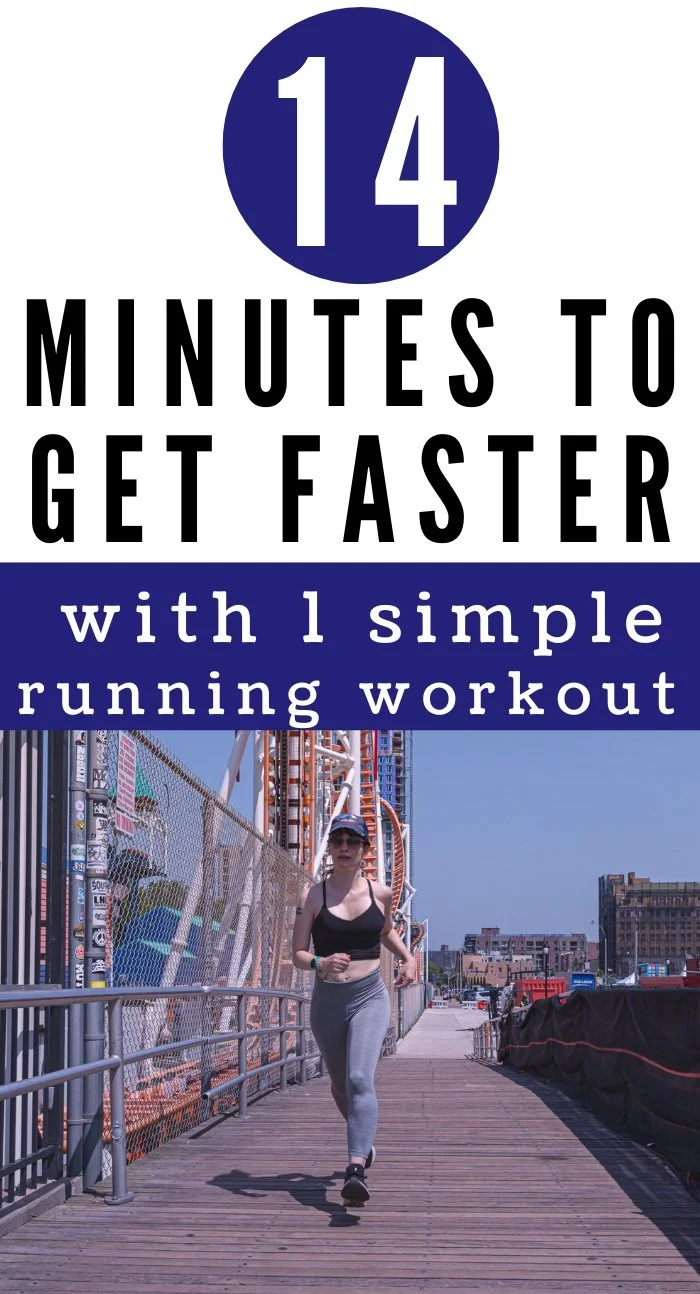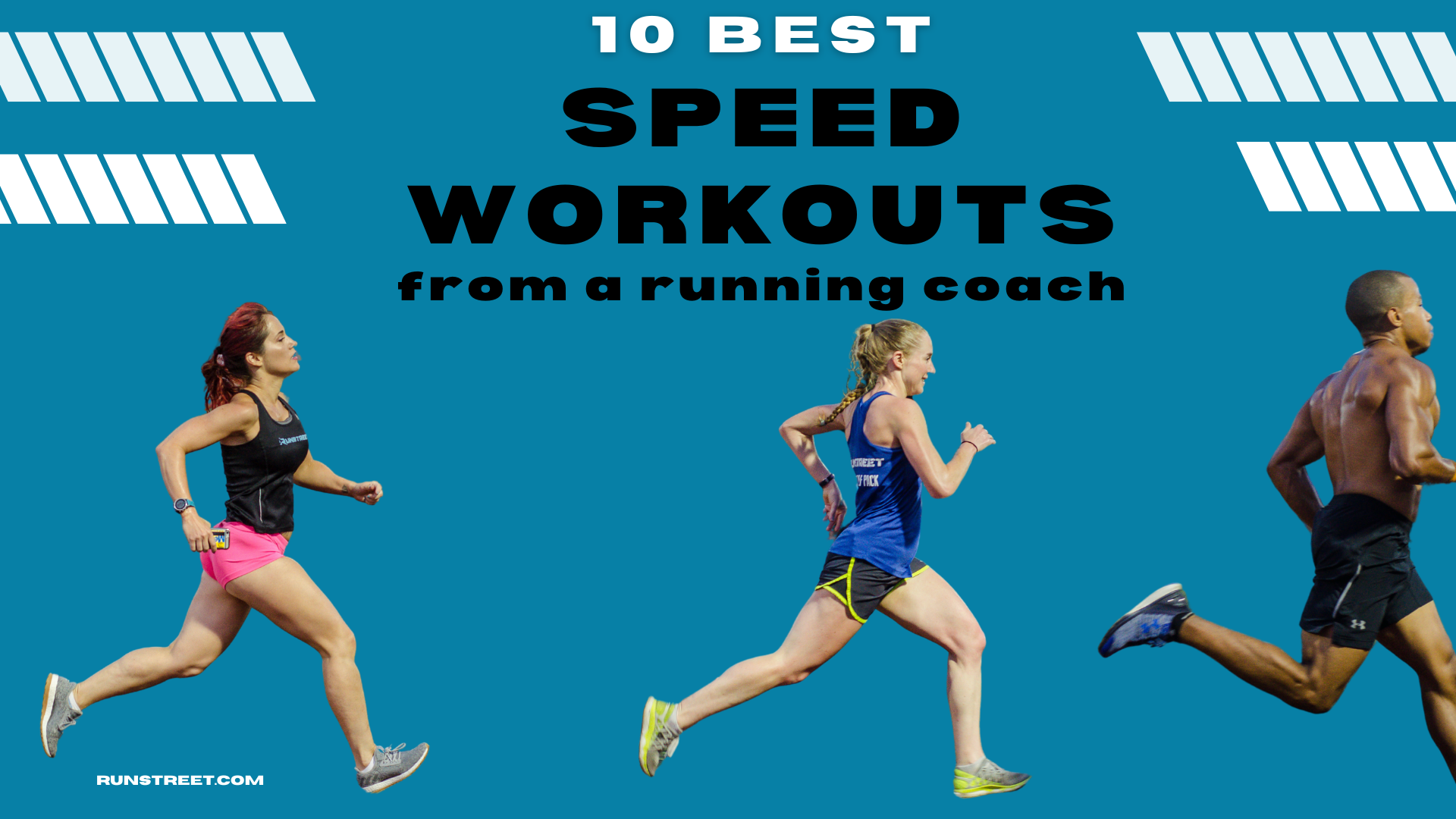How to Do Tabata Running Workouts
A track is a great place to do Tabata running workouts. Photos by Marques Jackson Photography.
By Marnie Kunz, NASM-certified trainer, USATF- RRCA-certified run coach
If you want to get faster, you can learn how to do a Tabata running workout. Tabata is a form of high intensity interval training (HIIT) workout that is beginner-friendly and adaptable for every fitness level. Tabata running is a great way to begin doing speed workouts, improve your running efficiency and get faster. Tabata workouts are short and simple to carry out, making them beginner-friendly. All you need is a timer, running watch, or running app to measure your interval times. As a running coach, I love this workout for a short, quick speed session and it’s a great option for beginners.
Tabata runs are short and intense, with 20-second intervals of high-intensity exercise, followed by 10 seconds of rest. It’s also important to have a warm-up and cooldown for this high-intensity run.
What Is A Tabata Workout?
Tabata training was invented by Japanese scientist Dr. Izumi Tabata and a team of researchers from the National Institute of Fitness and Sports in Tokyo. The scientists found that people who exercise in short, intense, 20-second bursts performed better on cardiovascular and anaerobic tests after a short period of training than their peers who did moderate-intensity workouts for longer periods of time.
Dr. Tabata's Tabata protocol included high-intensity intervals (now popularly called HIIT workouts) with short periods of recovery. Dr. Tabata went on to train Olympic speed skater athletes using this training method, which became known as Tabata workouts.
Types of Tabata Workouts
Tabata workouts have become a popular way to get in an intense, effective calorie-burning workout in a short period of time. Today Tabata workouts are a popular form of HIIT (high intensity interval training) workout.
Tabata training is very versatile so you can choose from a variety of exercises for - including bodyweight strength training exercises such as mountain climbers, burpees, push-ups, planks, and squats, as well as endurance activities like cycling, running, swimming, and other cardio workouts.
How to Do a Tabata Running Workout
You can reap the benefits of Tabata training with your running workouts. The basic technique of Tabata training is to do 20 seconds of sprinting followed by 10 seconds of rest, repeating for a total of 8 rounds and 4 minutes.
Although 4 minutes is not a lot for runners, we can adapt this Tabata running workout and make it longer, with an added warm-up and cool down and more rounds of Tabata running. The sprinting portions of the workout should be hard, at an 80 percent effort level for beginners and a 90 percent effort level for more advanced runners.
Related Post: RPE (Rating of Perceived Exertion) Scale Explained
The warm-up is important to help your muscles get primed for more intense running, and the cooldown will help prevent muscle soreness from the hard workout.
Sample Beginners Tabata Running Workout
You can do a Tabata running workout to improve your running speed and overall fitness level. You’ll also burn a lot more calories than you would running for the same amount of time at a moderate pace. Here is a sample Tabata running workout:
5 minutes relaxed pace run to warm up. Do dynamic stretches.
20 seconds sprinting, at 8 out of 10 effort level
10 seconds rest, slow jog
20 seconds sprinting, at 8 out of 10 effort level
10 seconds rest, slow jog
Repeat for a total of 8 fast bursts and 4 minutes of Tabata time
5 minutes slow run to cool down
Stretch
Total Workout Time: 14 minutes
A tabata running workout is ideal for your first speed workout since it is short. But don’t be fooled - 8 repeats of high-intensity sprinting with a short 10-second break in between will have you winded fast. Do not do an all-out 10 effort level for your first sprints as you will still need to complete a total of 8 speed bursts. Aim to maintain an even level of running speed for all your sprints, or if you do change speed at all, get faster by the final rounds of your Tabata running workout.
You’ll find this Tabata speed workout helps with your running efficiency and you’ll get faster for races or other training runs. If you are an advanced runner and want to add intensity, repeat the Tabata round for a total of 16 rounds of speed work. You can add even more intensity by doing your speed work on hills, by going uphill. On the rest segments, make sure to run or on flat ground to allow your body the little short recovery time it needs.
Here is an advanced Tabat running workout:
10 minutes relaxed pace run to warm up. Do dynamic stretches.
20 seconds sprinting, at 9 out of 10 effort level
10 seconds rest, slow jog
20 seconds sprinting, at 9 out of 10 effort level
10 seconds rest, slow jog
Repeat for a total of 16 fast bursts and 8 minutes of Tabata time
10 minutes slow run to cool down
Stretch
Total Workout Time: 36 minutes
My Experience with Tabata Runs
I tried this Tabata speed workout and found it is a great way to break up the monotony of my solo speed workout runs. Tabata running workouts are helping me improve my oxygen efficiency and leg turnover so I am getting faster on my regular runs. The frequency of changing between fast and slow bursts is ideal for my short attention span, and the short duration of the workouts is also helpful.
Tabata workouts are also great for boosting your metabolism, and I like to do Tabata training or other intervals for metabolic and fitness benefits even when I'm not training for a race. I especially enjoyed doing Tabata speed workouts in the early days of the pandemic when I had a short attention span and no big race plans but wanted to stay in shape.
When to Do Tabata Running Workouts
As with other speed workouts, you will need to plan out when to do your Tabata running. Follow the easy-hard training principle, which means you do an easy day followed by a hard day and never do two days in a row of hard workouts. The Tabata running workout counts as a hard day. So you will want to have an easy base run or rest day the day before and the day after doing your Tabata running workout.
Once you’ve mastered the Tabata running workout, you can also try adding some more interval workouts to your training program to improve your speed. If you need a customized running plan to help crush your goals, I am happy to help.
If you try this Tabata running workout, let me know how it goes.😊 For more training and fitness tips, follow and tag @Runstreet on Instagram to share your workouts and get cheered on. Happy running to you!
Related Posts: How to Run 5K, Interval Training for Beginners, How to Do Base Runs, 5 Speed Workouts for 5K Success, 6 Treadmill Workouts for Beginners
Marnie Kunz is a NASM-certified personal trainer and USATF- and RRCA-certified running coach based in Brooklyn, NY. Marnie likes helping people get and stay active to enjoy a better quality of life. When she’s not doing fitness things, Marnie enjoys exploring with her dog, a mischievous rescue Akita.




